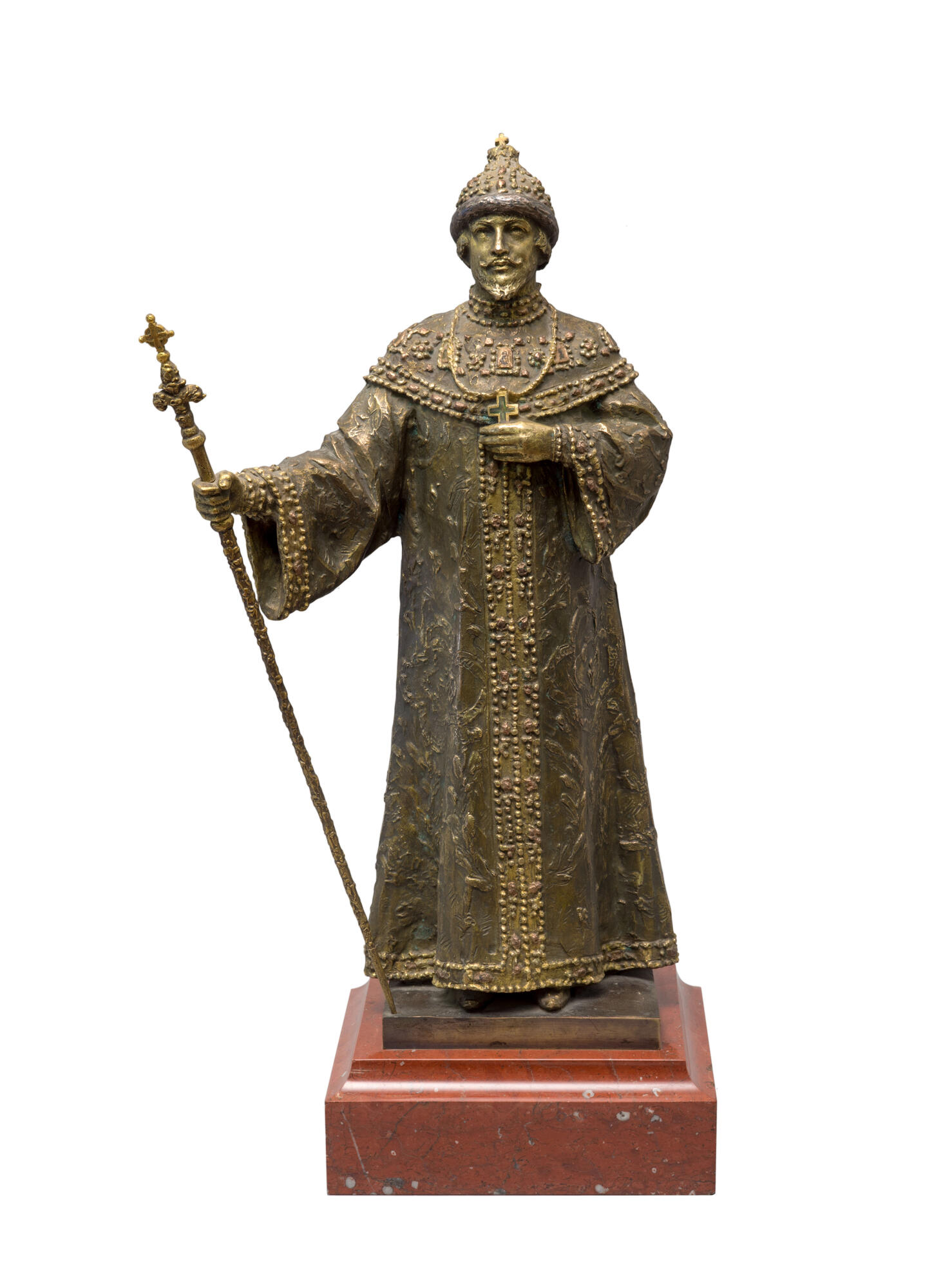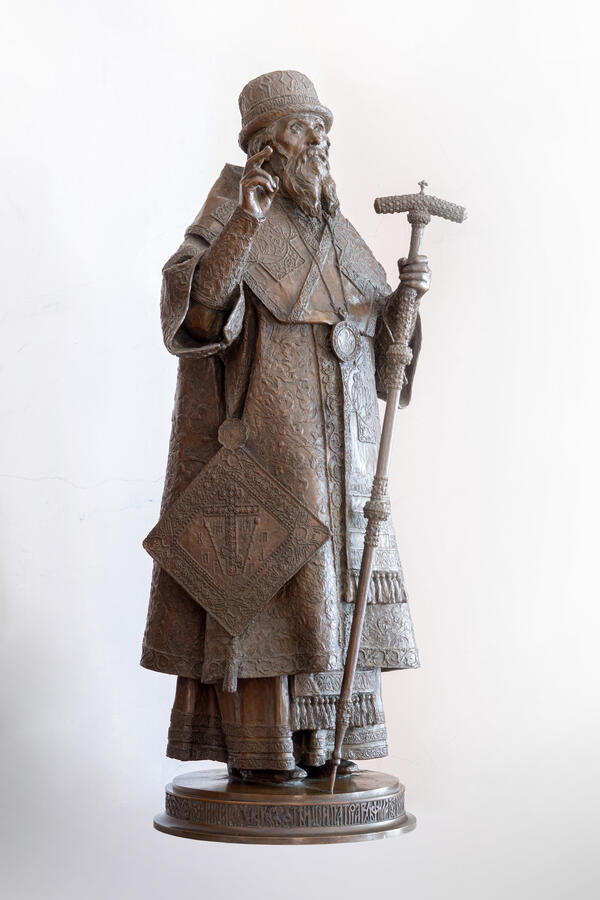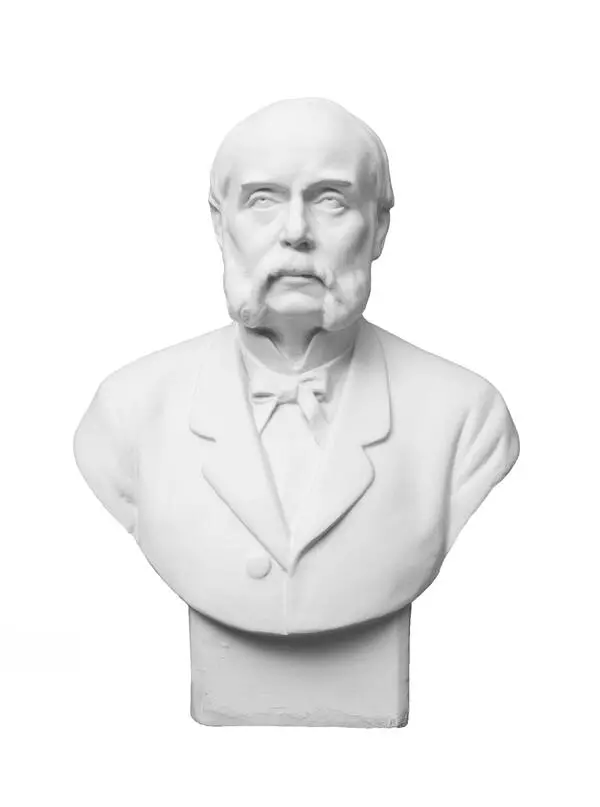In 1613, the Zemsky Sobor (Assembly of the Land) elected to the Moscow throne a representative of an ancient boyar family, the sixteen-year-old Mikhail Fyodorovich Romanov, who became the founder of a new dynasty. His accession marked the end of the Time of Troubles and opened a new page in the history of the Russian state.
Three centuries later, on February 21, 1913, Russia celebrated lavishly the anniversary of the Imperial House. The momentous event was marked by a number of magnificent ceremonies, embodied in all kinds of art, including visual arts and, in particular, sculpture.
The sculptural portrait of Tsar Mikhail Fyodorovich (1596–1645) is one of the works of art created to commemorate the 300th anniversary of the House of Romanov. The creator of the sculpture, Léopold Bernhard Bernstamm, was an outstanding portrait sculptor, who produced more than 250 images of Russian and European writers, musicians, and academics. His best works include busts of the writer Leo Tolstoy, the pianist and composer Anton Rubinstein, who was credited with opening the first Russian conservatory, the French novelist Gustave Flaubert, the composer Jules Massenet, and numerous monuments to Peter the Great.
The sculptor presented Tsar Mikhail Fyodorovich full-length, in ceremonial attire — wearing the ancient Monomakh’s cap, a royal cloak made of expensive fabrics, and with a royal staff in his right hand. This is not Bernstamm’s first work at the imperial court. Despite the fact that from 1885 the sculptor lived permanently in France, in early 1896, he was graciously received at court in Tsarskoe Selo. During that visit he made portraits of members of the imperial family and marble busts of Nicholas II and Empress Alexandra Fyodorovna that later served as prototypes for their sculpted images. In 1911, on the occasion of the centenary of the Tsarskoe Selo Lyceum, Bernshtamm created a monument to the outstanding graduate of the Lyceum, the great Russian poet Alexander Sergeyevich Pushkin.
Three centuries later, on February 21, 1913, Russia celebrated lavishly the anniversary of the Imperial House. The momentous event was marked by a number of magnificent ceremonies, embodied in all kinds of art, including visual arts and, in particular, sculpture.
The sculptural portrait of Tsar Mikhail Fyodorovich (1596–1645) is one of the works of art created to commemorate the 300th anniversary of the House of Romanov. The creator of the sculpture, Léopold Bernhard Bernstamm, was an outstanding portrait sculptor, who produced more than 250 images of Russian and European writers, musicians, and academics. His best works include busts of the writer Leo Tolstoy, the pianist and composer Anton Rubinstein, who was credited with opening the first Russian conservatory, the French novelist Gustave Flaubert, the composer Jules Massenet, and numerous monuments to Peter the Great.
The sculptor presented Tsar Mikhail Fyodorovich full-length, in ceremonial attire — wearing the ancient Monomakh’s cap, a royal cloak made of expensive fabrics, and with a royal staff in his right hand. This is not Bernstamm’s first work at the imperial court. Despite the fact that from 1885 the sculptor lived permanently in France, in early 1896, he was graciously received at court in Tsarskoe Selo. During that visit he made portraits of members of the imperial family and marble busts of Nicholas II and Empress Alexandra Fyodorovna that later served as prototypes for their sculpted images. In 1911, on the occasion of the centenary of the Tsarskoe Selo Lyceum, Bernshtamm created a monument to the outstanding graduate of the Lyceum, the great Russian poet Alexander Sergeyevich Pushkin.






